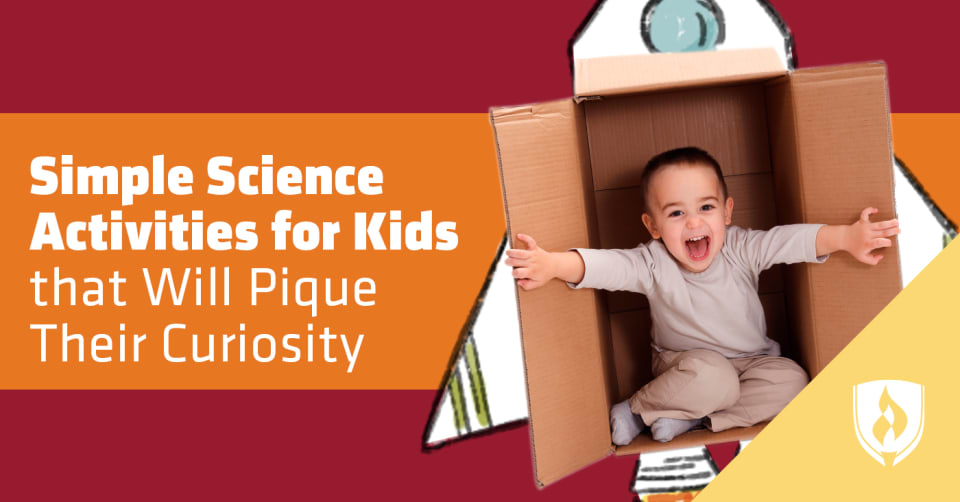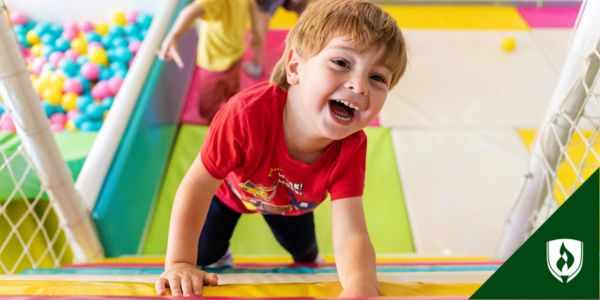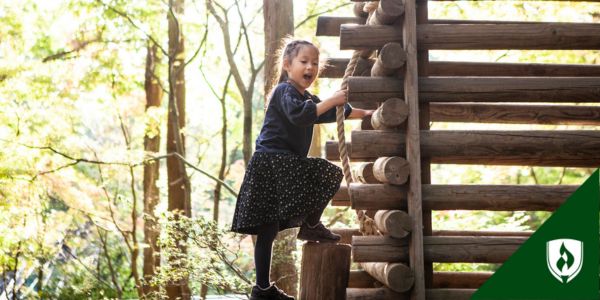16 Simple Science Activities for Kids that Will Pique Their Curiosity
By Lauren Elrick on 08/31/2015

The subject of science is vast and there are many different branches of the field to explore. Teaching kids about science when they’re young is important because it helps them build the foundation needed to comprehend the world around them. As they grow, they develop problem-solving skills, gain awareness about technology and conserving natural resources and will eventually advance from preliminary principles to pursue higher levels of scientific understanding.
There are scores of exciting science activities for kids out there. Some are more elaborate and time consuming than others. So we made it our mission to gather a sample of simple ideas that will have your child laughing and learning.
Check out our carefully curated list of science activities for kids. Sit back and enjoy the view as your youngster gets inquisitive and involved in the wonder of science.
16 simple science experiments for kids
1. Lime juice & baking soda
This idea from P is for Preschooler could potentially be the easiest of all preschool science experiments. Fill a pie tin or baking pan with baking soda, squeeze in some food dye or grate some chalk for color, grab the lime juice and you are all set for a fizzy science experiment. Kids will learn about the combinations of bases and acids and how they react together.
2. Walking on raw eggs
Will the break? Will they explode? Ask your kids what they predict will happen if they walk over a crate of raw eggs. All you need for this experiment suggested by Steve Spangler Science is a few cartons and some plastic to lie out over the floor. Children will learn about how the eggs’ shape and the carton’s shape helps protect the fragile eggs as weight is evenly distributed across them.
3. Evaporating water
This experiment from Learn Play Imagine is about as simple as it gets. All you need is water, salt, a spoon and a container of some sort. Simply mix the water and salt in the container and ask your child what he or she thinks will happen to it over time. Then, it’s a waiting game. After several days, your youngster will be in awe when the container is left with only salt!
4. Melting ice
Have you ever wondered how ice trucks get the ice to melt after a snowstorm? Gather some ice, food coloring, a few bowls, a large tray and some salt, and you’ve got the makings for both an artful and scientific experiment that teaches kids how the city keeps our streets safe in the winter. Head over to The Artful Parent for the full details.
5. Air pressure game
This science experiment doubles as a fun game, recommended by Kids Activity Blog. Place two kitchen sponges inside of a plastic zip-top bag and position a drinking straw in between the sponges. Put one side inside of the bag and one side poking out of the open part of the bag. Seal up the bag and blow it up. By squeezing on the bag to blow a cotton ball or pom pom ball around, kids learn about air pressure and have a blast while doing it.
6. Make ice grow
Freeze regular water or colored water in water bottles until it’s not quite ice but is still really cold. Pull out a cup of ice and pour over your ice mound. Watch as the ice stacks up and continues to grow! This activity from Teach Preschool helps children learn about how quickly and slowly ice can form.
7. Watch plants drink
How fast does a plant drink water, anyway? This experiment from Buggy & Buddy will help you find out. Just grab a cup of water, some red food dye, some leaves and find out! By snipping a leaf and placing it directly into the red-colored water, you’ll be able to watch as the dye spreads throughout the veins of the leaf.
8. Two-color oil & water bottles
Everyone knows that oil and colored water don’t mix, but what happens when you add colored oil? Besides your basic ingredients of water, oil and food coloring, you’ll also need candy colors (oil-based food coloring) to color oil. Watch the fascinating separation and have fun adding beads or other small objects to see where they land. Find the full instructions at Play Trains.
9. Balloon candy experiment
Here’s another fun idea from Learn Play Imagine. Pour pop rocks and nerds into a deflated balloon using a funnel. Then attach the mouth of the balloon to a soda bottle and let the candy pour into the pop. The balloon will expand and kids can learn about chemical reactions between different substances.
10. The science of sound waves
Teach your child how sound travels with this experiment from Edventures with Kids. All you need is a ruler, a spoon and some string. Tie a knot around the spoon leaving two long ends of string on each side. Wrap each end around your child’s pointer fingers and have them hold their fingers to their ears, letting the spoon hang below their waist. Gently hit the ruler against the spoon and watch the priceless look on your child’s face!
11. Make music with water
Fill several vases with different levels of water—color the water to make it more fun if you’d like! Using a wooden spoon or mallet, tap the vases to here the difference in tones. Challenge your child to identify how the water level affects the tone. Use this activity from PreKinders to teach your little one how sound is made by a vibration.
12. Color flowers using science
This age-old experiment does require a white carnation or two, so swoop a couple up next time you’re at the supermarket. For the rest of the experiment suggested by Science Bob, simply slice the bottom part of the stem and place into two separate cups of colored water. Watch one part of the flower turn one color and another part of the flower turn another color. Kids will learn how plants absorb nutrients and how substance can affect color.
13. Swimming spaghetti
In a glass, combine water, two teaspoons of baking soda and one-inch pieces of uncooked spaghetti. They will sink to the bottom. Then add the vinegar and watch what starts to happen to the spaghetti. This is a great experiment from Boys’ Life to help explain carbon dioxide and chemical reactions to kids.
14. Dancing balloons
Make a tube out of poster board by taping the sides together to form a cylinder. The size of the cylinder you make should match the size of your fan because you want the cylinder to sit on top of it as you tilt the fan directly toward the ceiling. Blow up balloons, turn on the fan and watch as the cylinder holds the balloons directly above it. This experiment shows what a vortex—a mass of rotating air or water—will do! Head over to Babble Dabble Do for the full description.
15. Apples & handwashing
This experiment from Growing in Pre K is super simple. Pass an apple slice back and forth between the two of you or amidst a group of children. Place this in a sealed jar and then in another sealed jar, place an apple slice that has not been handled by everyone. Watch the difference in mold and bacteria that develops on the handled apple slice after a week. Use this activity to explain germs and bacteria—and the importance of handwashing!
16. Write a secret message
Another winner from Boys’ Life, this experiment will help explain water molecules and surface tension. Drop a bit of dishwashing detergent into a cup of water and stir it to mix well. Next, dip a cotton swab into the mixture and write a message with your “invisible ink” on a mirror. Once it dries, you won’t be able to see it. Next time your tot takes a bath, show them what happens when the mirror gets fogged up!
Inspire your little scientist
Watching kids discover what makes the world tick is incredibly rewarding. And who knows? You might learn a little something along the way too! Bookmark this list and save it for a rainy day.
If helping young kids learn brings joy to your heart, it may be a sign you should make a career in the classroom. Read up on other signs you should be teaching preschool.




